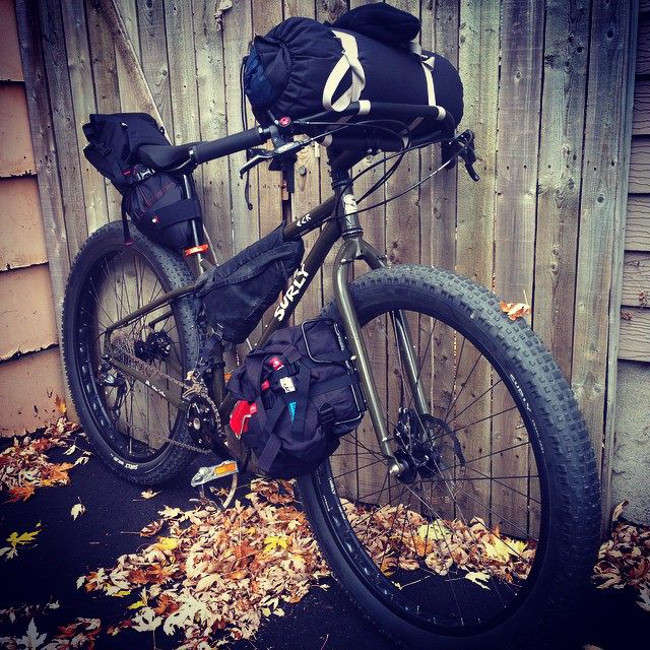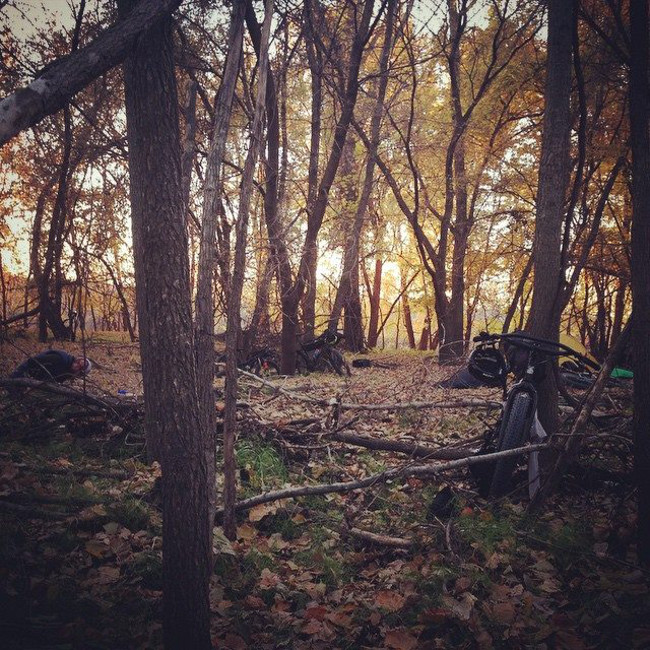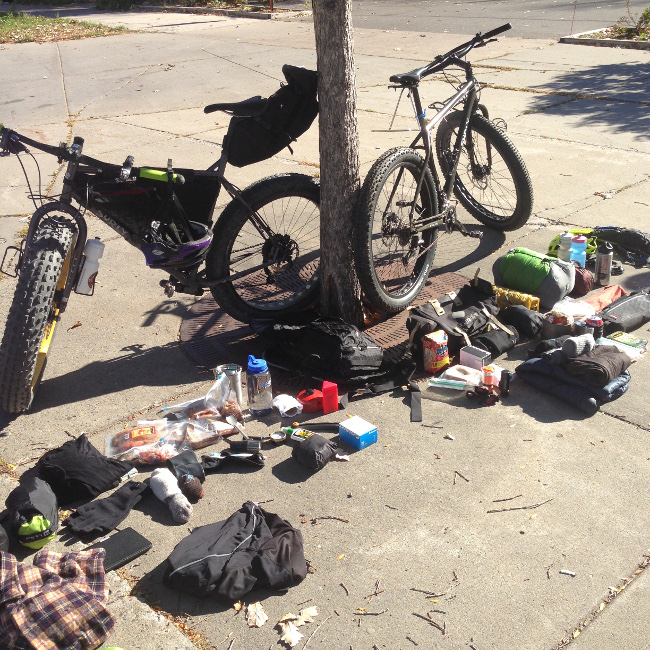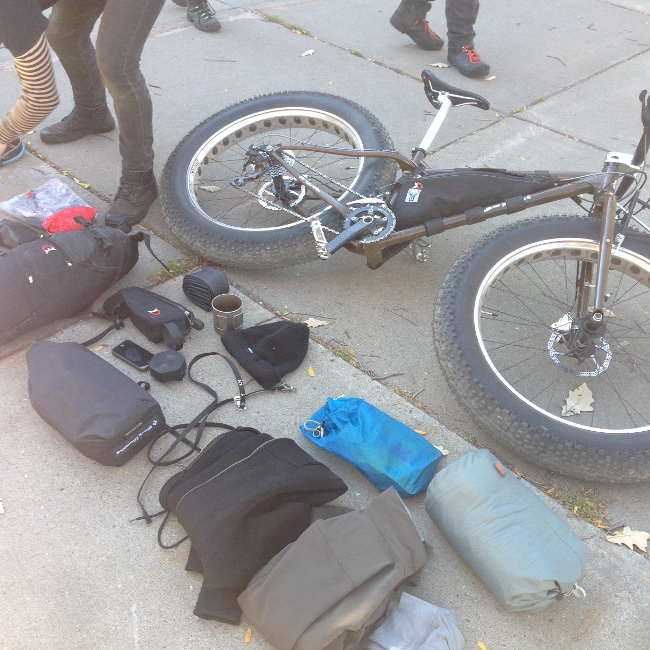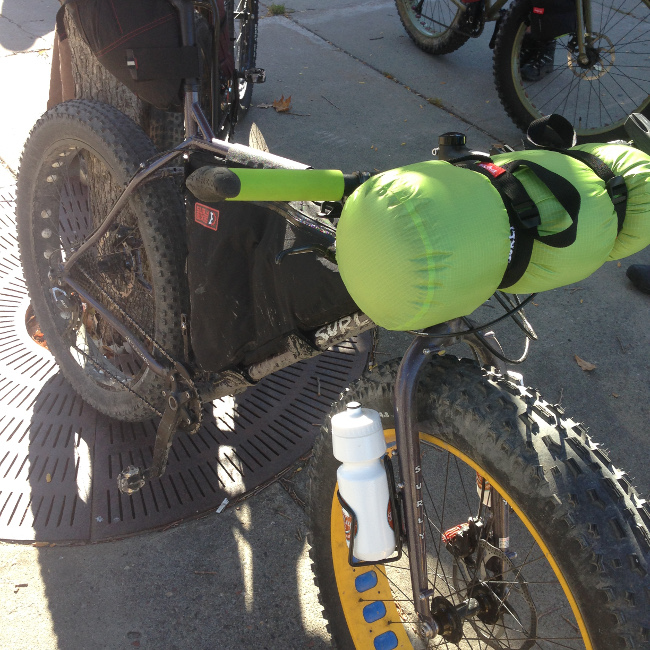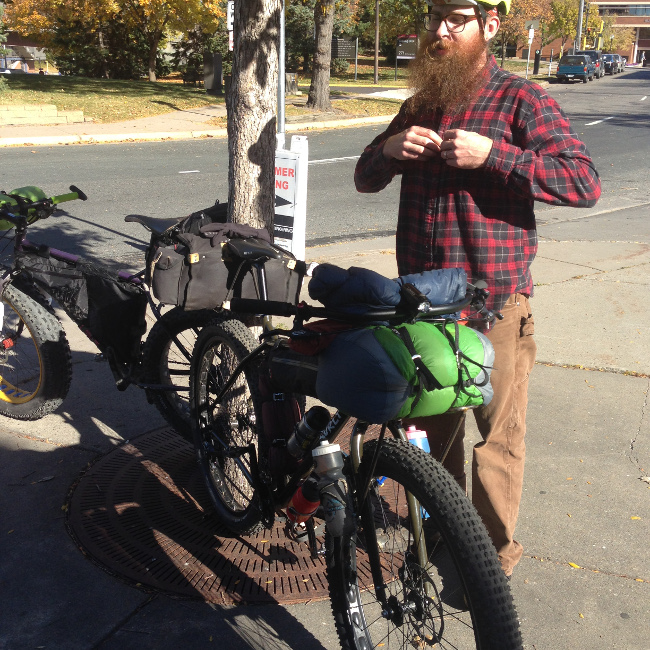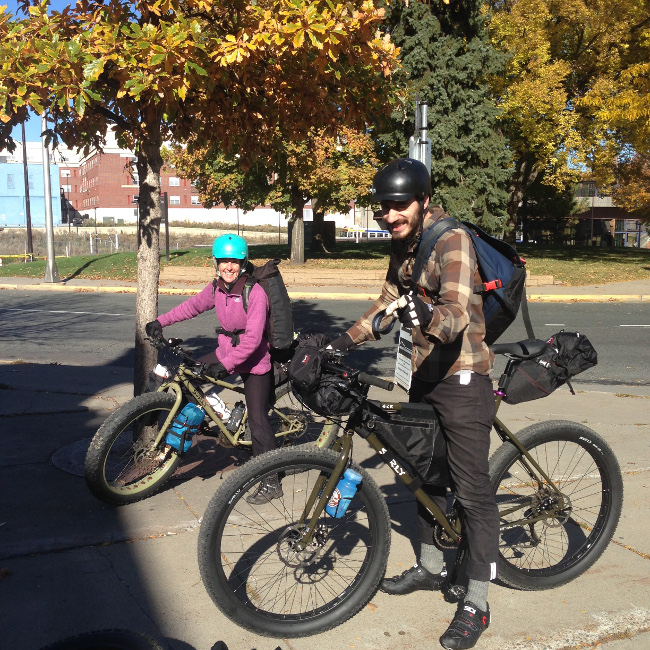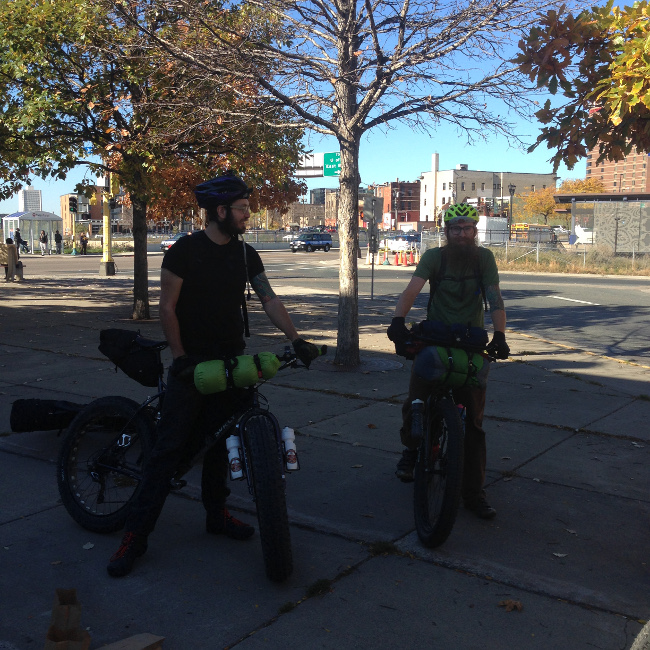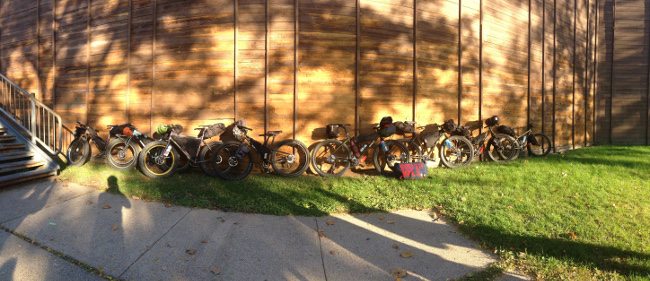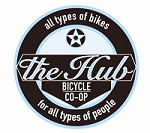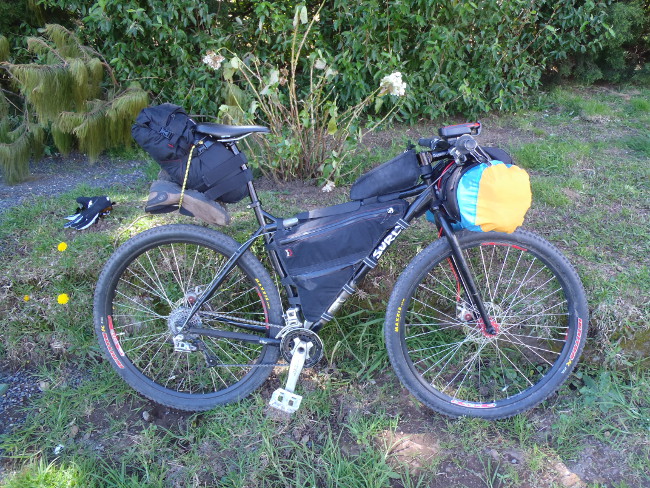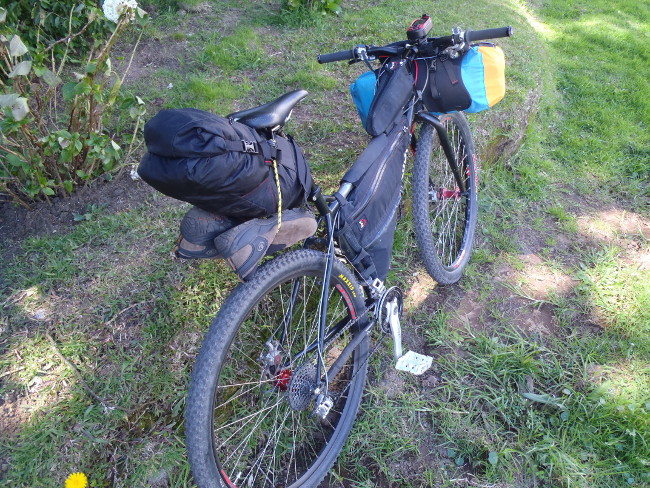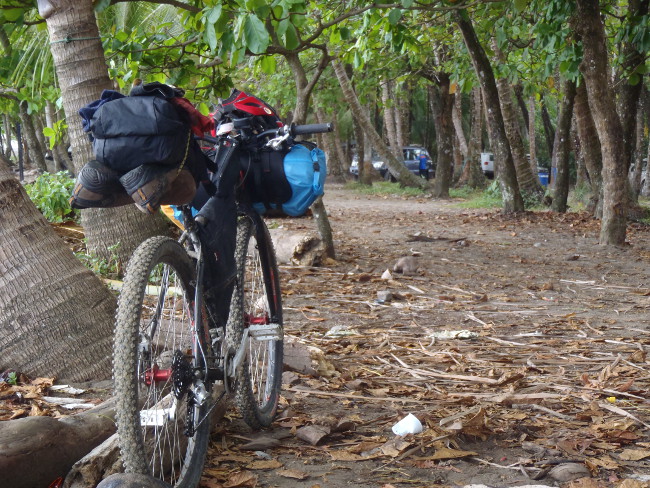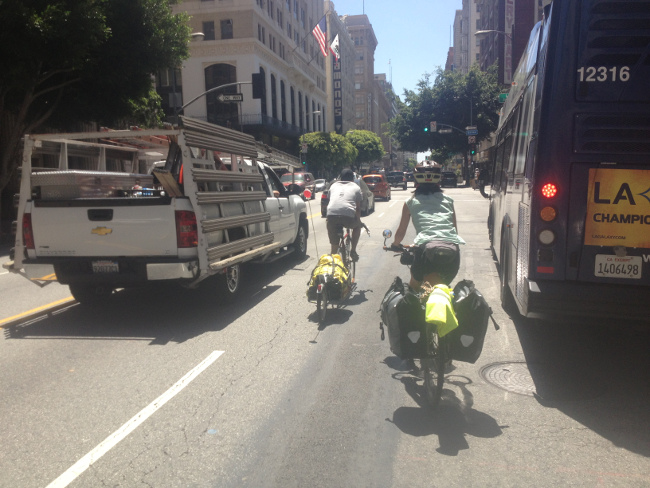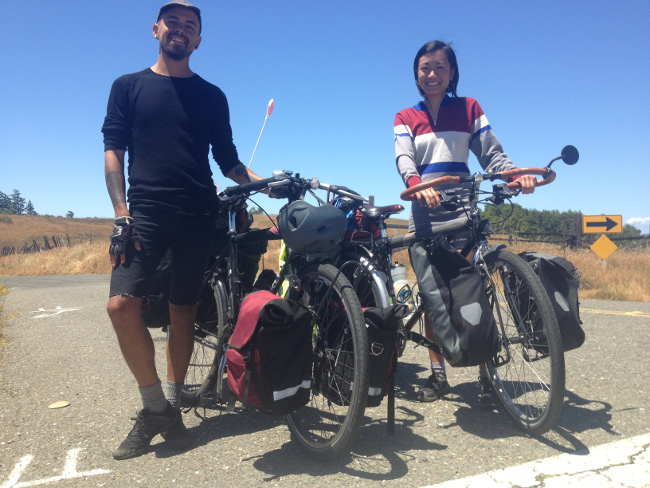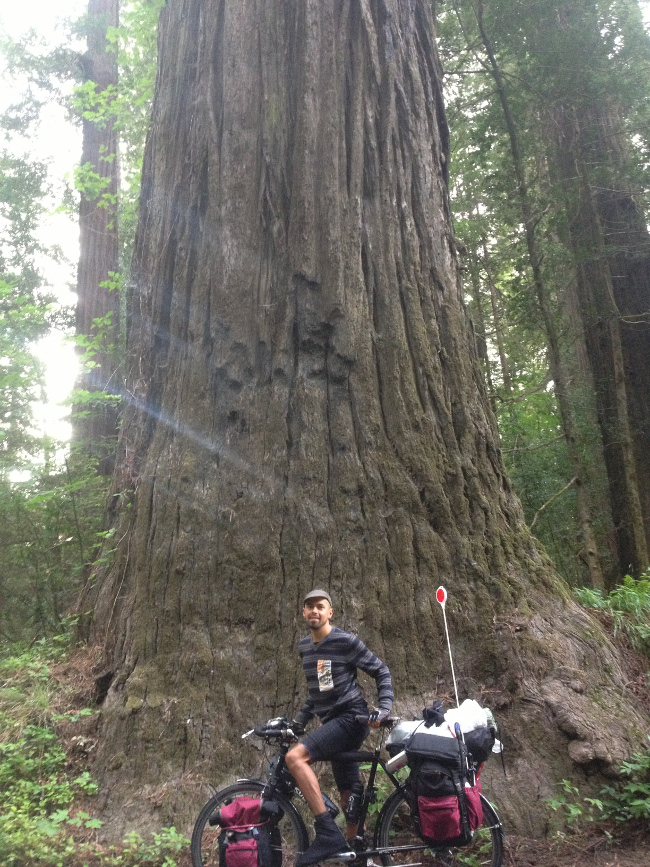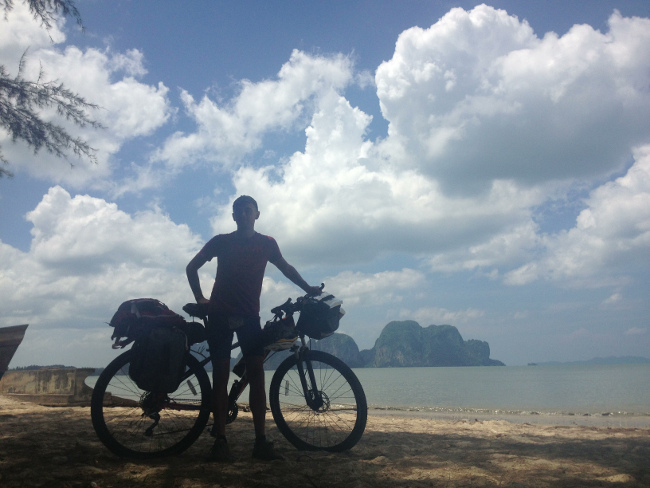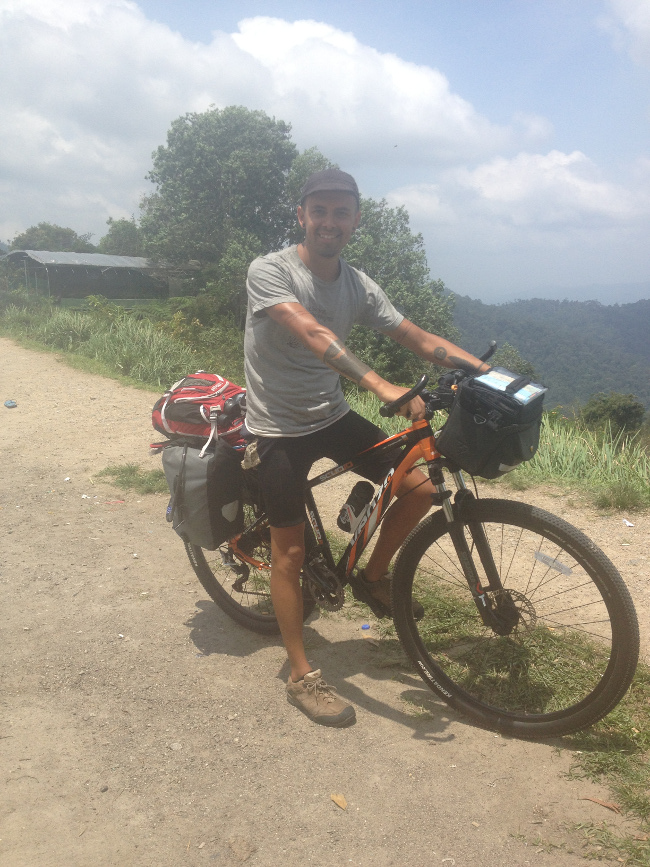Touring & Bikepacking Intro
Introduction to Bike Touring & Bikepacking
We have several bike touring & bikepacking veterans at The Hub who are happy to answer questions, but here is a quick primer on the basic nuts-and-bolts.
What is the difference between bike touring and bikepacking? The terms have a lot of interchangeable qualities, being that they are both adventures by bike that last at least over night. Bike touring refers to trips that mainly stay on roads, whereas bikepacking has more off-road focus and is reminiscent of backpacking by bike.
Traveling out in the open, at your own pace, up close to where you want to be… Going by bike is a great way to take a weekend camping trip, or a trip across a country (and yes, people have biked around the world). You can create your own route or there are established routes that are at state and national levels. Adventure Cycling Association is a good place to start for long trips in the USA, and bikepacking.net is a great resource for off-road touring including routes, gear reviews, and discussions within the bikepacking community.
Here are some things to think about when planning a trip: it is important to consider how much time you have, how much money you want to spend, how much weight you are ready to carry, and how far you would like to ride each day. Each of these considerations affect what type of bike touring you may choose to do. The options include going on a vehicle supported trip, where you ride your bike but somebody else carries your gear, allowing you to travel farther and faster than you might in a fully loaded bike; doing a “hotel tour” where you carry your clothes and some food, but largely stay at hotels and eat at restaurants to minimize what you need to carry; and finally a fully self-contained tour, where you will carry a tent, sleeping bag, food, stove and fuel to get you to where you are going.
Gear Recommendations
THE BIKE
At the core of bike touring is the bike and how it fits you. A reliable, well fitting bike can be ridden hundreds of miles comfortably, with a low probability of mechanical issues. This article is not going to discuss all of the intricacies of bike fitting, which is a very diverse topic, but there are tons of sites that you can google that discuss it. The late Sheldon Brown naturally has a good start on it and links to others as well.
Getting a dedicated touring bike will cover all of your bases. This would include: a stable and strong frameset, strong wheels (especially the rear), puncture resistant tires, and a saddle that fits you (Brooks Saddles are a good bet). Look up the specs on the Long Haul Trucker and you will have a very good starting point for road touring bikes, and the ECR for off-road bikepacking adventures.
Here are more touring bikes that you are able to get through The Hub.
ACCESSORIES
For a road touring setup, you will generally want sturdy and waterproof panniers. Some are fully waterproof from all angles like the Ortlieb models, some offer just a rain fly over part of the bag. Most long distance riders would opt for the former.
Some people choose to have a BOB trailer carry most of their gear. This can be a great option especially if your bike doesn’t work well with full racks and panniers. There are pros and cons to the BOB, but overall it is mostly recommended if you need more cargo than you can fit comfortably with the rack/pannier setup on the bike.
Fenders are a valuable add-on. This will allow you, your bike, and other gear to stay cleaner and dryer when it is wet outside.
For an off-road trip, omitting racks and panniers and instead using frame bags, oversized seat bags (we recommend the Revelate Viscacha seat bag, which you can special order through us), and strapping gear to your handlebars allows your bike more clearance through narrower trails lined with bushes, trees, rocks, and tall plants and grasses. More lightweight and compact gear is also especially desirable when loading up for an off-road trip.
Lights are a must, front and back. You never know when you will have to cover a few miles to the next campsite or stop. Generally you will want a stronger front light than just a safety light, something that can actually illuminate the road. This level of light usually starts at about 2 watts or 70 lumens, but for some brighter is better.
Camping gear would be the same for most any backpacking trip, but you may want to focus on a compact and light setup if you plan on covering a lot of miles. Remember there are various shelter options from compact tents, tarps, camping hammocks, and bivy sacks.
Bring plenty of calories and water, and use both before you feel the hunger or thirst. This will help avoid bonking, which can sneak up on you if you aren’t planning ahead.
Make sure to keep an eye on our Calendar for any touring and bikepacking seminars that may be coming up!
Touring Photos from Hub Staff
Photos from our mechanic Tony's tour
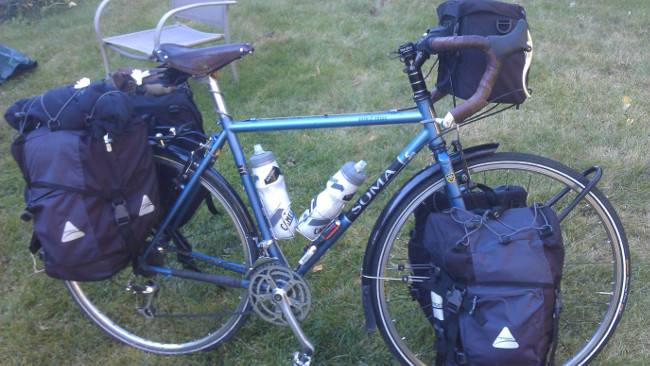
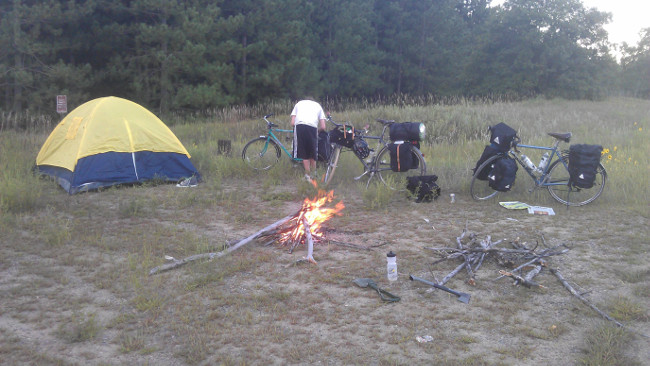
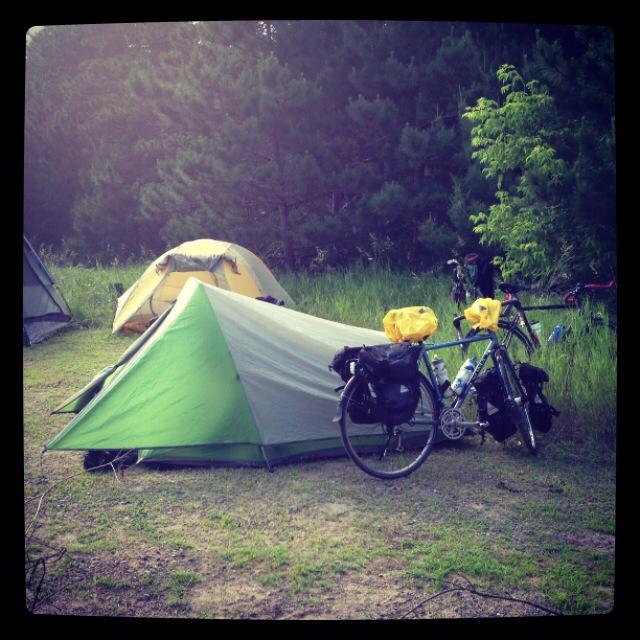
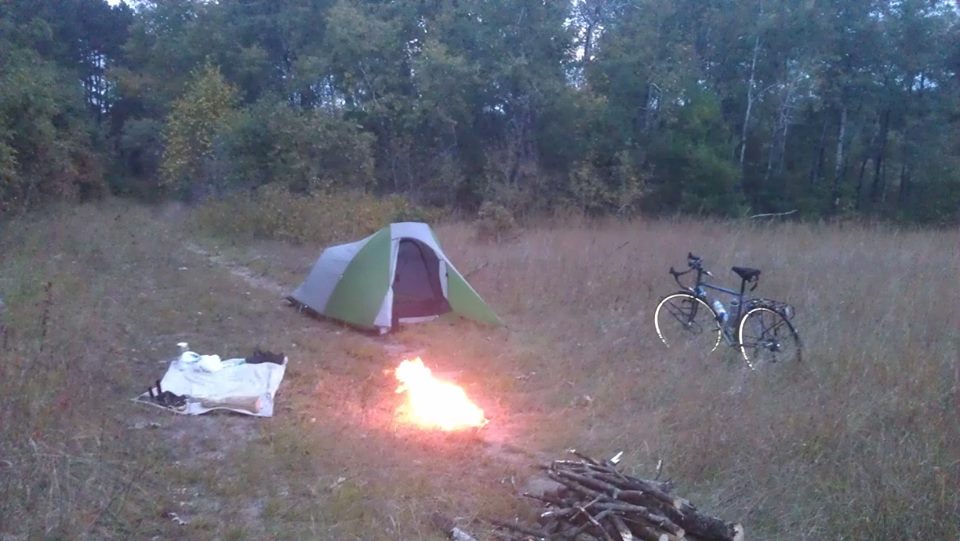
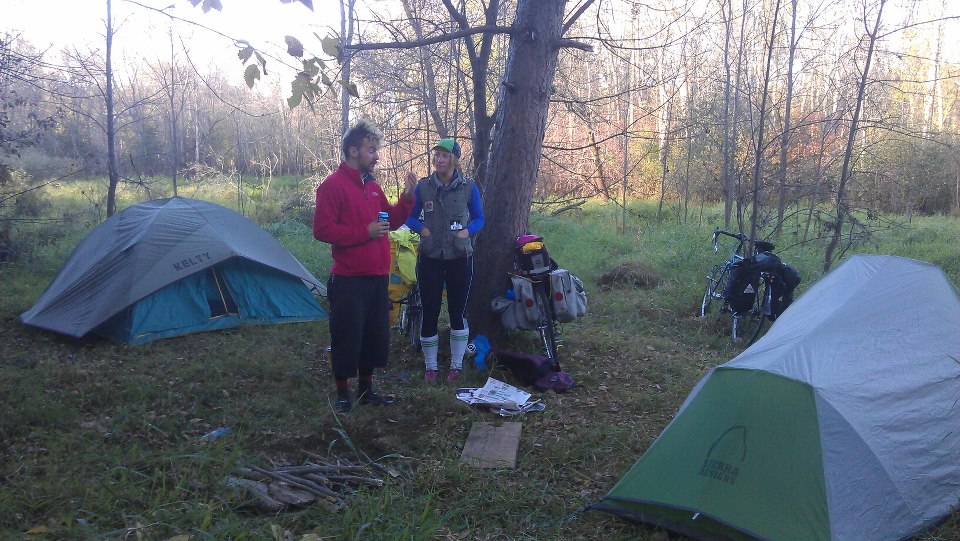
Bobby's Trip to Costa Rica: His Loaded Karate Monkey and the Bike Packed in a Backpack Case
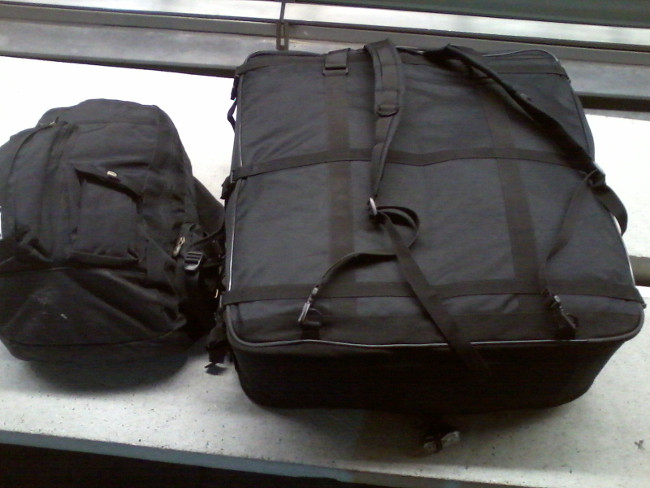
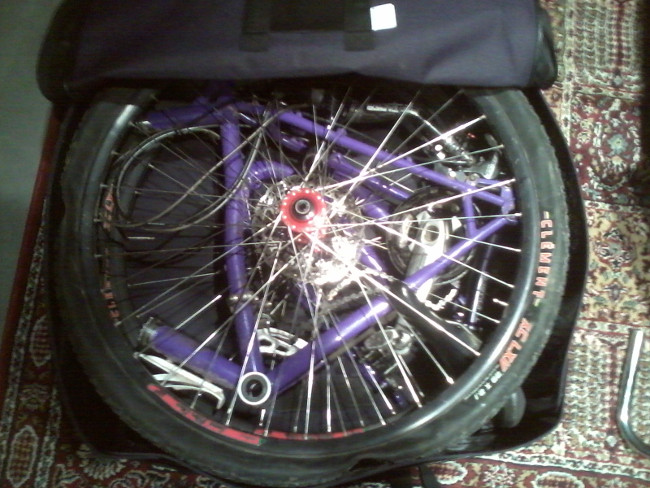
Benji tours the West Coast of the US and SE Asia
Chelsea, Joshua, Jody, Lisa & Zach go Bikepacking
